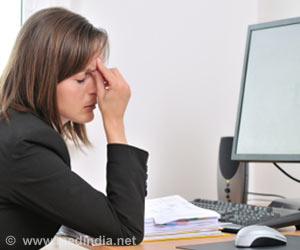Three main brain changes have been found to occur in people those who spend a long time in space.

‘With the help of the study, it has been believed that the governing cause for the widespread structural changes in the brain following long spaceflights might lie in minimal pressure changes within the body's various water columns under conditions of microgravity that have a cumulative effect over time.’





In cooperation with Russian colleagues and with neuroscientists based at the University of Antwerp led by Floris L. Wuyts, LMU neurologist Professor Peter zu Eulenburg has completed the first long-term study in Russian cosmonauts. In this study, which appears in the New England Journal of Medicine, they show that differential changes in the three main tissue volumes of the brain remain detectable for at least half a year after the end of their last mission.
The study was carried out on ten cosmonauts, each of whom had spent an average of 189 days on board the International Space Station (ISS). The authors used magnetic resonance tomography (MRT) to image the brains of the subjects both before and shortly after the conclusion of their long-term missions. In addition, seven members of the cohort were re-examined seven months after their return from space. "This is actually the first study in which it has been possible to objectively quantify changes in brain structures following a space mission also including an extended follow-up period," zu Eulenburg points out.
The MRT scans performed in the days after the return to Earth revealed that the volume of the grey matter (the part of the cerebral cortex that mainly consists of the cell bodies of the neurons) was reduced compared to the baseline measurement before launch.
In the follow-up scans done seven months later, this effect was partly reversed, but nevertheless still detectable.
Advertisement
The white matter tissue volume (those parts of the brain that are primarily made up of nerve fibers) appeared to be unchanged upon investigation immediately after landing. However, the subsequent examination six months later showed a widespread reduction in volume relative to both earlier measurements.
Advertisement
"Taken together, our results point to prolonged changes in the pattern of cerebrospinal fluid circulation over a period of at least seven months following the return to Earth," says zu Eulenburg. "However, whether or not the extensive alterations are shown in the grey and the white matter lead to any changes in cognition remains unclear at present," he adds.
So far the only clinical indication for detrimental effects is a reduction in visual acuity that was demonstrated in several long-term space travelers. These changes may very well be attributable to the increased pressure exerted by the cerebrospinal fluid on the retina and the optic nerve.
The governing cause for the widespread structural changes in the brain following long spaceflights might lie in minimal pressure changes within the body's various water columns under conditions of microgravity that have a cumulative effect over time.
According to the authors, to minimize the risks associated with long-term missions and to characterize any clinical significance of their structural findings, further studies using a wider range of diagnostic methods are deemed essential.
Source-Eurekalert









